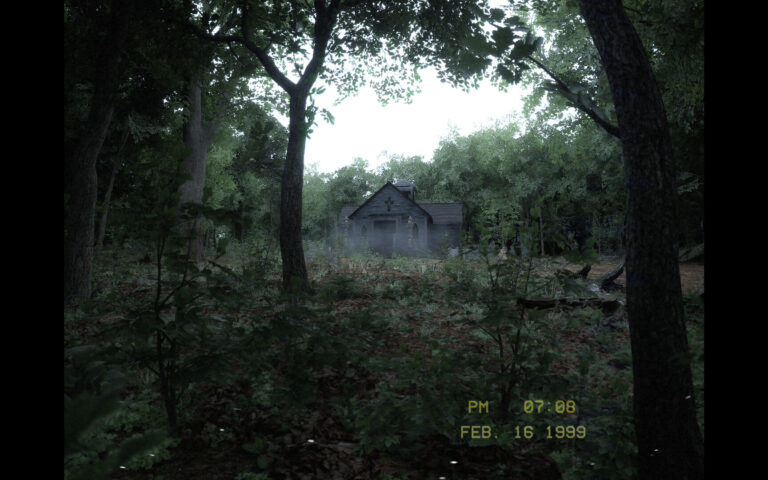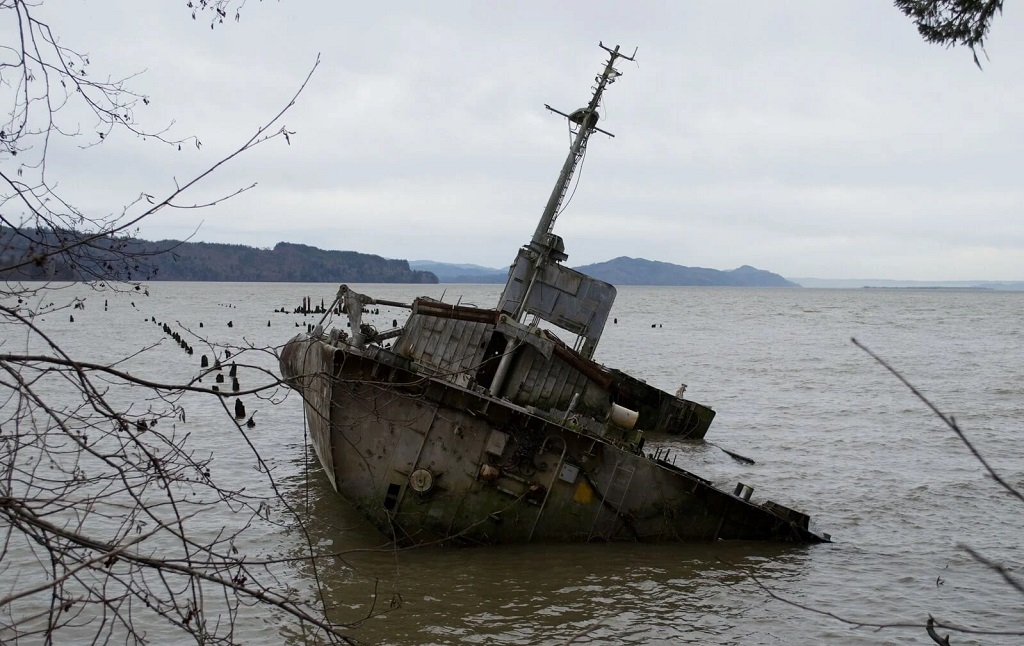
While vacationing along the coast of the Pacific Ocean recently, I came face-to-face with a phobia I hadn’t realized had such a grip on me, until it hit me in the face. My encounters with the sights of multiple real-life shipwrecks triggered a fear of submerged or partially-submerged man-made objects; a condition known as Submechanophobia.
In researching this phenomenon online, it’s clear that I’m not alone in suffering from this fear. There are dozens of articles online, as well as an entire Reddit community dedicated to this phobia, as more and more people are realizing they suffer from Submechanaphobia. It’s hard to pinpoint the exact reason why submerged man-made objects trigger such a response, but theories about what causes it are endless.
Is it a simple fear of the unknown or what you can’t see under the water? Maybe the fear of the destruction and decay of these objects represents the people who made them and the eventual fate of mankind to succumb to nature’s reclamation of Earth? Is it the visible destruction of objects that traditionally represent safety and shelter from nature’s elements that freaks us out so much? Perhaps when the human mind instinctively detects a foreign object in an otherwise natural environment, it triggers a fight-or-flight response.
The answer varies from person to person, as the human mind is an extremely complex system that we aren’t even beginning to fully understand yet, similar to how little of our oceans we’ve truly explored and understood in modern-day science.
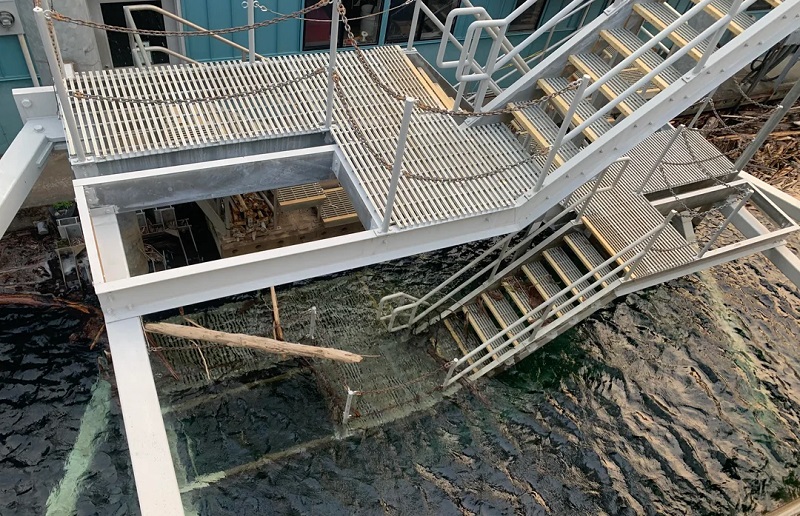
As with many phobias, submechanophobia isn’t something I suffered from as a child. It’s one that I developed as an adult, perhaps from a deeper understanding of the world and nature, or something of the sort, since I didn’t have any kind of real traumatic event in my life that caused it.
I was never involved in any kind of real-life water accident, the phobia just developed with time and was largely unknown to my conscious mind until a random trigger happened while playing video games some years ago. It stands to reason that as we get older, childhood fears subside as new ones take over with different life experiences and knowledge we acquire leading us down these untraveled roads into our own psyche.
In subjecting myself to different pictures and videos related to submechanophobia, I realized there were very specific triggers that made it worse for me, as it will be for each person. My particular fears in this realm are more specific to objects such as boats, buoys, and other free-floating objects, for instance, than they are to buildings or other kinds of anchored structures, even though they all have an effect on me in different ways.
Another strange part of it is that partially-submerged objects are far more fear-inducing than fully-submerged objects, which may be related to the previously stated idea that there’s still some part of it that’s obscured from or “unknown” to the human eye.
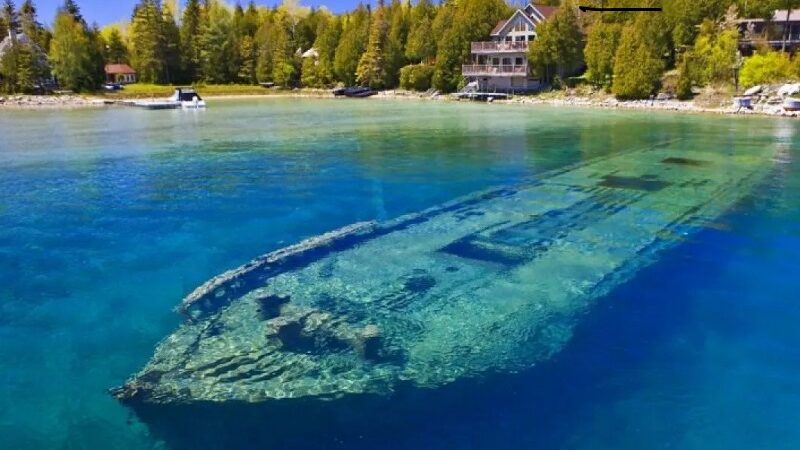
Not only is this project to learn more about my own personal phobia and what the specific triggers are for me, but also to test if the theory of exposure therapy through video games may help to overcome some of these fears. Exposure therapy is a technique that psychologists have been using since the 1950s to create a safe environment in which to “expose” individuals to the things they fear and avoid. The hope is that the reaction will be lessened in its intensity and frequency.
Since this is such a specific phobia that requires rather specific conditions to encounter, and they are conditions that are fairly uncommon if you don’t live near a body of water or spend much time near them, I thought video games could be an interesting way to experience this more directly due to the immersion in a 3D world, and this way, I could see if it triggered similar feelings to experiencing it in person.
As the technological capabilities of video games have advanced over the years, they’re already being used to treat various conditions, and ongoing research is taking place around the world regarding using video games for therapeutic or health-related outcomes. These studies and treatments are being used to explore the possibilities for improving conditions for Alzheimer’s, anxiety, dementia, physical therapy, PTSD, self-management, and many others, so I wanted to do some of this research on my own.

Using video games as a potential way to lessen the effect of this phobia felt like an interesting way to study my own mind as well as the medium of video games being used for this purpose, so I played through dozens of titles to research the topic. This included many games I had played before and some that were new and specific to the topic, all featuring objects or structures in various states of submersion. One major criterion that was used to narrow down the research here was that it needed to be 3D graphics, since 2D just didn’t have the same triggering effects.
I’ll talk about some of the biggest highlights that triggered the strongest feelings of this phobia in me during my time with them, and then some updates to talk about any thoughts on if the immersion in this phobia through video games has helped at all. Even though experiencing it in a game will never be a substitute for the experience in real life, it may help in some ways, given the alluring aspects and interaction that’s possible in the medium. These may not all be horror games by design, but they certainly triggered the emotion of fear in me.
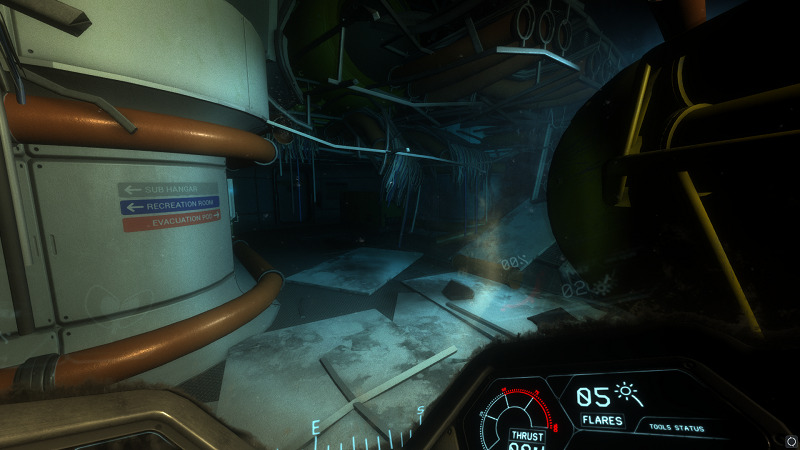
Narcosis (VR optional)
Narcosis from 2017 was a game I’d been aware of and owned for years, but didn’t take the time to dive into (no pun intended) until starting research for this project, and what an experience this was, especially in VR. Not only is this game just a fantastic horror experience across the board, but in virtual reality, the feelings of claustrophobia, isolation, and submechanophobia were very high. The absolutely stunning visuals and sound design that portray an accurate representation of the darkness and horror that lies in our deepest waters were top-notch and featured some intense phobia triggers, even without many of the partially-submerged objects that traditionally cause the worst feelings for me.
Exploring the completely submerged research facilities was a horrifying task to undertake, given the level of detail and decay shown in the game’s aesthetics, and how many man-made objects were present in all the areas of the game. In many ways, this was definitely one of the strongest players in my research and a shining example of how to capitalize on underwater distress. It’s definitely recommended for anyone who hasn’t checked it out yet, especially if you have any type of water-based phobia.
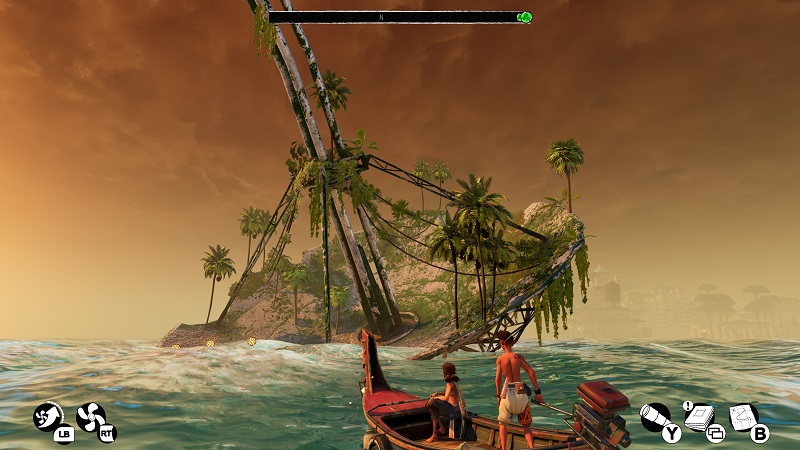
Submerged series
While 2015’s Submerged and its 2022 sequel, Hidden Depths are far from the horror genre in practice, and despite their relatively indie budget and scope, their depiction of a world that’s being reclaimed by nature is pretty powerful in offering distinct submechanophobia vibes. The game takes place in a city that’s entirely flooded by the overflowing oceans, and you’re left to explore the city by boat and on foot, making ample time to see and experience tons of mostly submerged objects such as other boats, skyscrapers, towers, amusement parks, and more.
Once the in-game clock switches over to nighttime and the amount of light gets low, the world becomes more sinister and creepy since you never quite know what you’ll run into or what lies just beneath the water’s surface. This is where things got even more intense. The games feature fun platforming and a great art style, so they’re fun to play already, but the depiction of submechanophobia triggers here were just a bonus for the research.
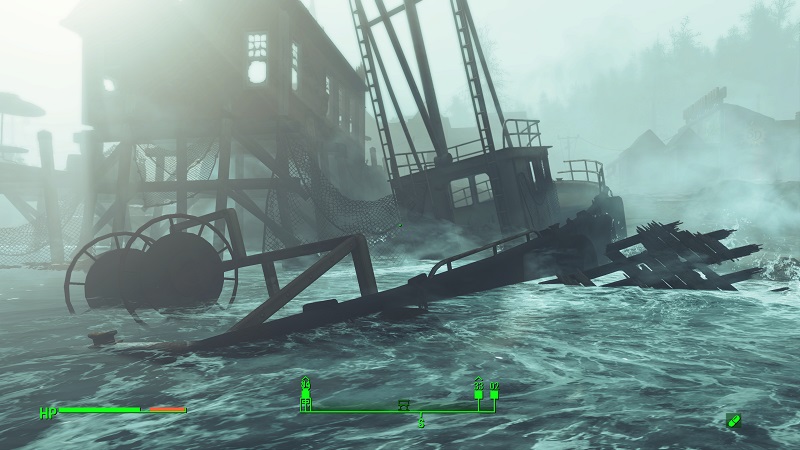
Fallout 4 (VR optional)
While it may be a surprise to some, I have no qualms in saying that Fallout 4 contains some of the strongest and most frequent submechanophobia themes of any game on this list. Despite it mostly being known as a post-apocalyptic sci-fi series, the depiction of sunken and submerged objects is absolutely harrowing for those affected by this phobia.
The entire Eastern half of the in-game map is along the Atlantic coast of Boston. Plus there’s a large river that runs diagonally through the whole map, and I’d wager to say there are nearly a hundred submerged boats, buildings, and other structures within Fallout 4‘s waters. Not to mention all of the game’s bodies of water are horribly contaminated and filthy, making seeing beneath the waterline that much harder.
Not only does the main game feature a pretty staggering amount of these triggers, but the Far Harbor DLC is almost entirely focused on locales that surround the water. opening up an entirely new portion of the map that has plenty more sunken objects of its own.
The low visibility of the water, coupled with the blurring and darkening effect that happens when you go underneath, just makes the feeling that much worse, and when playing it in VR, the triggers were intensified even more, so this game was truly a personal challenge for me. Highlights included a partially flooded lighthouse, a gigantic beached tanker ship, a half-sunken nuclear power plant, and boats of every shape and size, all in various states of decay and submersion, making nearly every area in the game a constant stream of triggers.
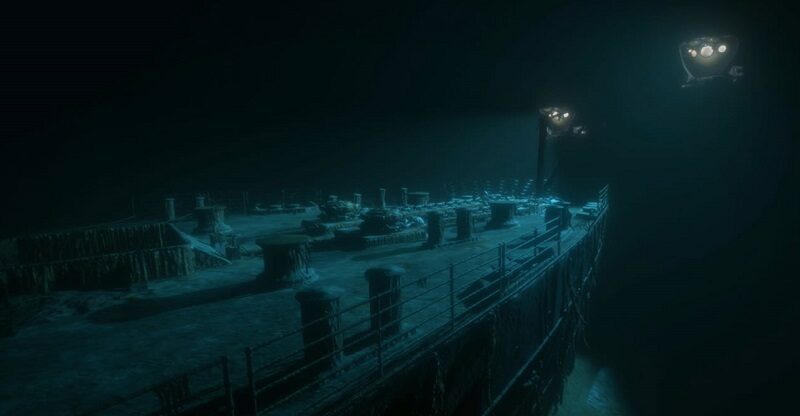
Titanic VR (VR optional)
(Oddly enough, given the turn of recent events, some may think this is related to or sparked by the recent sinking of the vessel full of billionaires in the Atlantic while going to view the sunken remains of the Titanic last month. However, I was already working on this project before these events took place, though it is some oddly peculiar timing!)
Titanic VR is a title from 2017 that was created as an educational experience to teach players about the history of the titular liner, both when it was afloat and the history of the research done around it while it sat on the bottom of the ocean for the last 100+ years. The experience not only lets you be a passenger on the ship during its sinking, but also takes you down to the ocean floor as a researcher, scouring the wreck to find artifacts and information about the disaster.
Both of these sections of the game were almost equally terrifying since the underwater segments are depicted with such detail and care put into what the experience of being at the bottom of the ocean is really like,. Even the brightest light sources only slightly illuminate what you’re seeing below.
Random deep-sea creatures floating in the depths would often scare the hell out of me as I constantly feared that the wreck of the ship could further collapse at any time with me inside it. The fear was very real, and the discovery of not only the ship’s carcass itself but many of the objects within it gave constant submechanophobia triggers, especially in VR.
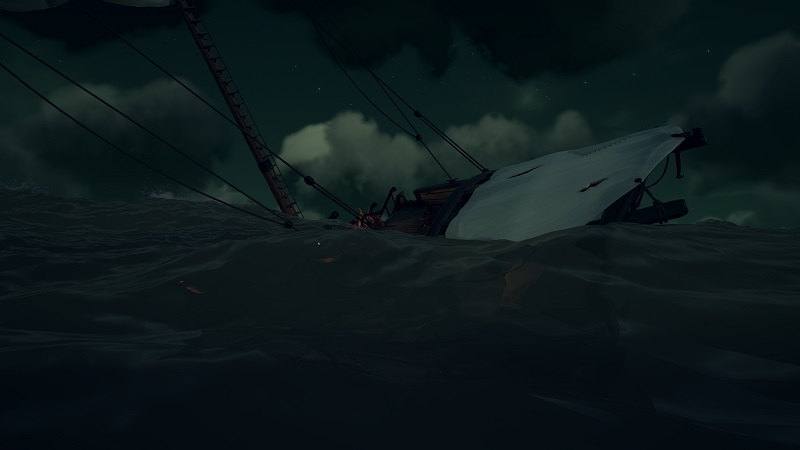
Sea of Thieves
Once again, while this game may be about as far from what most people would consider a horror game as you can get, it contains several elements that, even while depicted with a fairly unrealistic and stylized visual style, still evoke some deep feelings of submechanophobia on regular occasion. The amount of objects you find below the waves is staggering in Sea of Thieves, from partially sunken ships, treasures, and structures to giant underwater caves, and these are more than enough to cause some heavy uneasiness to those who suffer from this phobia.
Aside from all the underwater experiences you have in the game, being on the crew of a ship that’s actively sinking is one of the most terrifying experiences for those affected, as you see all the ship’s decks start to overflow with water and you embrace your watery grave as the ship sinks to the bottom of the ocean. Seeing all this happen in real time has a distinct effect on me every time it happens, and it seems to never gets any less uncomfortable.
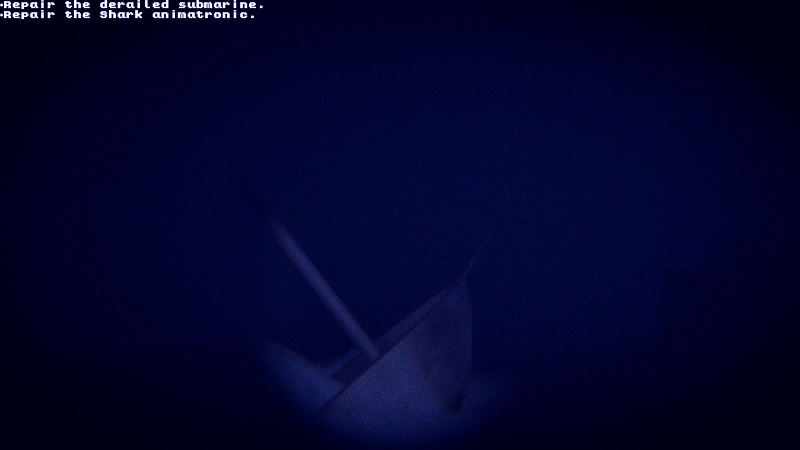
Dread in Deep Voyage
Dread In Deep Voyage is a little indie horror game that was created as part of one of Dread XP’s indie game jams in 2022, and what the developer was able to accomplish in a bite-sized 30-45 minute game is quite impressive when it comes to submechanophobia. The concept is that you’re a maintenance employee of an amusement park with an underwater ride, and you must dive down into the ride area to perform maintenance on the aging parts.
This game was giving uncomfortable vibes as soon as I found myself standing at the bottom of the ride’s tank and seeing several sunken objects as soon as my relatively weak light could penetrate that far. Despite its low-poly PS1 art style and fidelity, the imagery here was truly terrifying, even before any of the horror of the game set in during the second half. Once you’re already traumatized by the environment and concept itself, you’ll soon find yourself getting jump-scared and chased by things that should not even be moving under the water. For a free indie game, the dev really nailed these triggers perfectly.
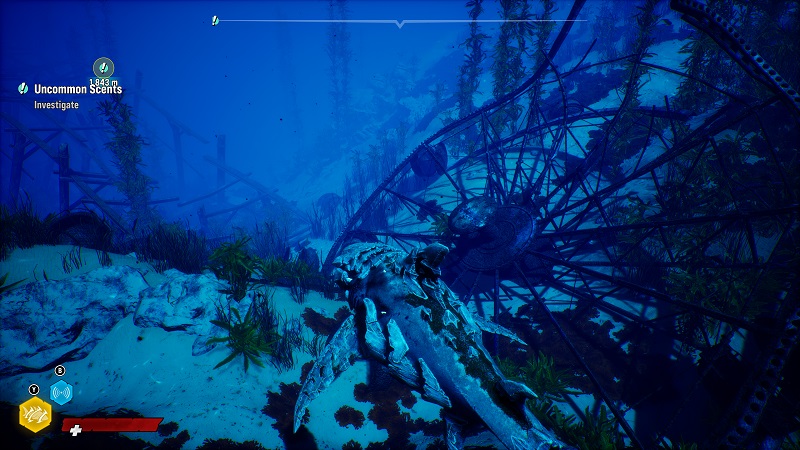
Maneater
As another odd contender in this list, 2020’s Maneater became a bit of a surprise when revisiting it for the research for this article, in that nearly every area of the game is full of all kinds of strange sunken objects, large ships, and general submechanophobia triggers beneath its surface. The fact that the game is so fun to explore and traverse can often make you forget how terrifying these underwater environments are, but my recent time spent with the game reminded me that these triggers here are pretty intense.
This is all furthered by the fact that, as a shark, you pretty much can’t actually leave the water, so you’re stuck underneath with all the things below, no matter how much you’d like to go on land to get away from them. Later in the game, you’ll also be able to sink many different kinds of boats in real-time, and the visuals that go with these moments are usually pretty terrifying, with human bodies screaming and flying off the ship as it sinks to its watery grave before your eyes.
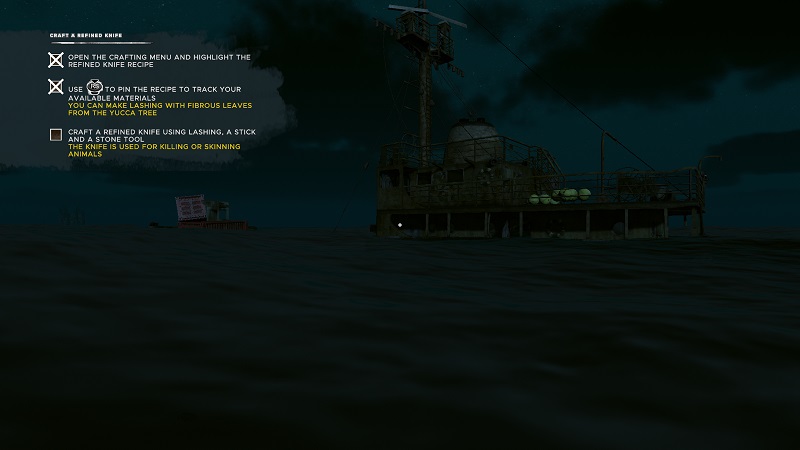
Stranded Deep
While the essence of Stranded Deep is to be a fairly realistic survival game that takes place on a deserted island after a plane crash, what starts to unfold afterward just keeps getting progressively worse for those with strong submechanophobia. As you search the island for items and supplies, and eventually escape the island, you’ll be forced to explore sunken ships in various states of decay and submersion, with active strong waves constantly pushing you around and restricting your agency.
The feeling of being inside these ships with the violent sea taking control of your body caused some truly awful feelings, especially if you attempt to examine these ships after the sun has gone down. On top of having to explore, you’ll also have to face off against some terrifying underwater creatures in their various sunken abodes (which are mostly fully-sunken ships,) which just makes it feel that much more like a horror game for me. The gameplay isn’t the greatest overall, but its ability to trigger feelings of submechanophobia is quite high throughout.
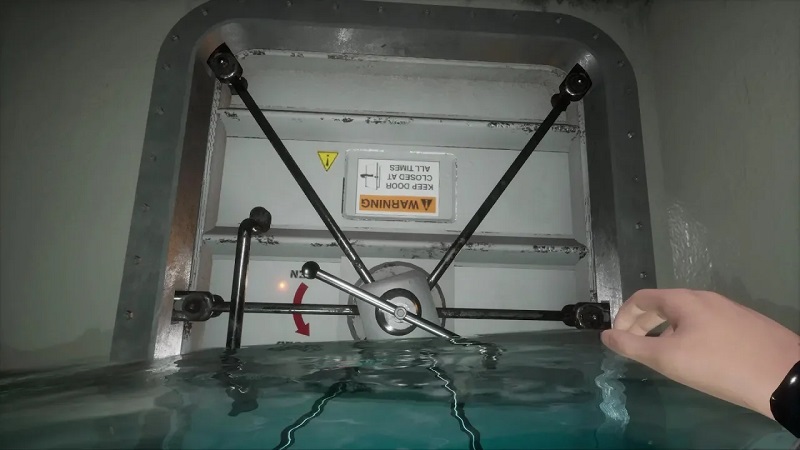
Freediver: Triton Down (VR only)
Freediver is a 2019 VR game where you play – as the name suggests – as a diver trying to rescue crew members and escape a capsized research ship that’s largely submerged besides some very small air pockets. To say this game is stressful for those who suffer from submechanophobia is a gross understatement, as you must also constantly manage your oxygen supply as you explore, making for some extremely uncomfortable times.
Constantly seeing parts of the ship that are upsidedown and decaying, dead bodies, and dark, cramped corridors caused frequent anxiety for me, and even though the game can be completed in about 60-90 minutes, it was an extremely intense experience to bear, as the panic-inducing rush for oxygen and submechanophobia triggers were ever-present.
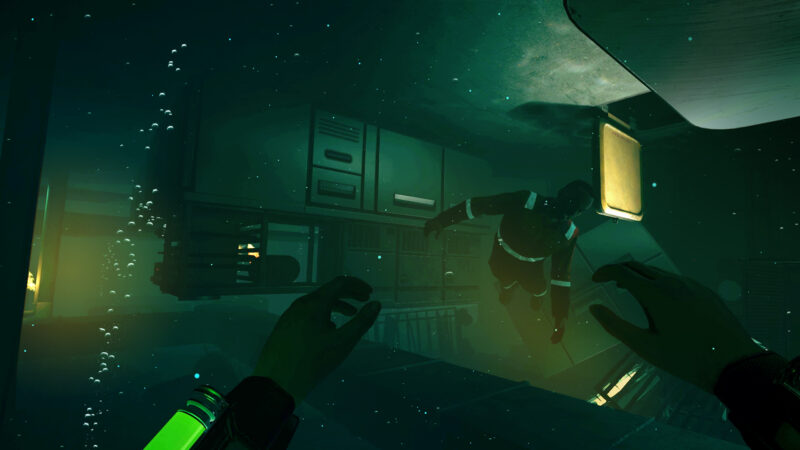
The results were that first-person and VR gameplay tended to help with the triggering, but it wasn’t completely necessary, and photo-realistic 3D graphics were also not required, since some of the low-poly games often worked just as well. The sound design of the games can also play a part in triggers being more intense, whether it’s the music or the sound effects, but even many scenarios with no music cues at all still caused tension. Often, the realistic nature of the sound made the feeling that much more palpable to experience, since it just fills in what the mind expects that situation to actually be like.
Another observation was that, unsurprisingly, the fear is often relatively intensified in relation to how little light is available in the scene, so the darker the scenario or the water, the higher the fear and the more intense the phobia, just like in real life.
The anxiousness I felt from these games was often remarkable and caused very similar feelings to when I was faced with this fear in real life, even if only about 2.5 of my senses were usually immersed in the experience, as opposed to all five of them when in person.
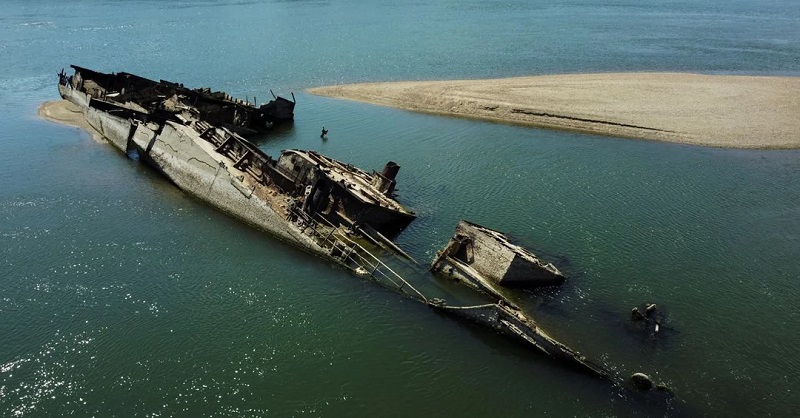
As far as whether immersing myself has helped to lessen the intensity or frequency of the triggers, I would need to do more long-term research to come to any conclusive answers. As of now, when going back to some of the games with the strongest triggers, the effect was slightly less than it was the first time. Perhaps this can count as some light desensitization or exposure therapy, but I’m not qualified to give a definitive answer on this myself.
I truly hope the medical and psychological fields will continue considering video games as a tool to be used for therapy and helping people overcome difficulties they may be experiencing. Hopefully, we’ll be able to find out more about how we can use the horror games we love to better our own mental health in ways we may not yet realize.
Do you suffer from submechanophobia or have you ever used video games to confront any of your personal fears? I’d love to hear any stories in the comments or by reaching out online, and thanks for taking this journey with me.

Other games played for this project which contained some lighter submechanophobia triggers were: The Shore, Resident Evil Revelations, Cold Fear, Fallout 3, Fallout 76, Dark Pictures: Man of Medan, Soma, What Lives Below, Bioshock 1&2, Sea of Solitude, Assassins Creed: Black Flag, Turgor Pressure, The Bends, Undercurrent, Corpse Ocean, Abyssal, Dredge the Quarry, Dagon, and Call of Cthulhu (2018).
There was also a large group of other games that featured aquatic themes that were played that didn’t trigger the phobia in any significant way, including Call of Cthulhu: Dark Corners of the Earth, Carrier, No One Lives Under The Lighthouse, Submerged: VR Escape the Room, Deep Fear, Hydrophobia, Subnautica, Depth, Portal 2 (Submechanophobia map), Iron Lung, The Mysteries Under Lake Ophelia, Lure, Visitors: Marine Invasion, Cement Shoes, Lake Facade, Siren’s Wharf, Resurfacing of the Tiger Shark, and Dredge.

 IDOLxISxDEAD
IDOLxISxDEAD
